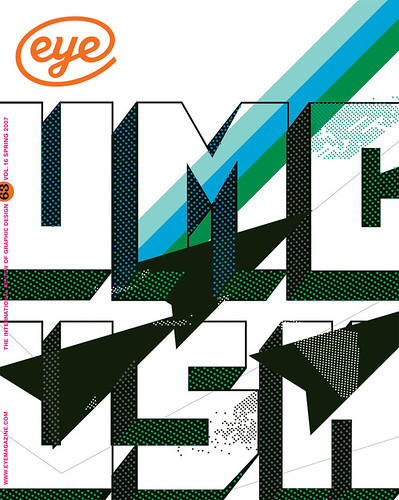Spring 2007
Edward Wright’s Optimism On Display
Edward Wright: Design Work
Department of Typography & Graphic Communication, University of Reading<br>21 January – 31 March 2007Edward Wright (1912-88) was a designer, artist, writer and teacher. His work is incredibly diverse, and indeed ‘Design Work’, the subtitle to this show, does not do justice to the breadth of material on display. Such variety of interests, inspirations and accomplishments may partly account for his relative obscurity (also remarked upon by Robin Kinross in 1993, Eye no. 10, vol. 3). This exhibition should be another step toward a wider recognition of this pioneer of British modern graphic design.
Conceived by Paul Stiff, Reader at Reading’s Department of Typography, the exhibition was curated by research fellow Petra Cerne Oven. Though ‘only a sampling’, representative of Wright’s mature output, this is an effusive display that defies generalisations – in this sense it will surely appeal to a wide audience. Walking through the show, one gets the impression of Wright’s eclecticism; his roots in Latin America and his interests in poetry, Dada and Surrealism and painting are evident. Also on display is the architectural lettering for the Sixth International Union of Architects Conference (including lettering plans, colour drawings and photographs), his work for the Whitechapel’s ‘This Is Tomorrow’ show in 1956, and the poetic Codex atorrantis (sketched layouts, a poster and the book itself) as well as concrete poetry, book design and drawings of alphabets.
Wright’s architectural work will also be of wider interest; the profusion of drawings, sketches and photographs of lettering on modern buildings, from his work with Alison and Peter Smithson to the rotating sign for New Scotland Yard, forms a body of compelling work in this field, much of it ‘unsettlingly outside the canonical tradition of public lettering’, according to Stiff. There are also two hand-bound sketchbooks full of vivid, spontaneous sketches and notes.
As a teacher, Wright worked at the Central School, the Royal College of Art, and at Chelsea, and his pupils included Ken Garland, Derek Birdsall, Colin Forbes, Alan Fletcher, as well as Germano Facetti, the cultural historian Joseph Rykwert, and the architect Theo Crosby. Garland, Rykwert and Crosby are among those whose writing is reproduced in the publication accompanying the exhibit, which is not a document of the show but an unassuming collection of written pieces by and about Wright, with a scholarly bibliography and lists of work at the end. This small booklet anchors what is an engaging exhibit in its origins as part of a research project (‘The optimism of modernity: recovering modern reasoning in typography’) in the Department of Typography at Reading.
Wright’s work is interspersed with panels of quotes from friends and colleagues, testifying to his popularity and to his standing in a larger community. Despite this, Wright felt like an outsider, an idea conveyed both in his unconventional oeuvre and in his writing. This is deeply ironic; the strongest impression one gains from the show is that Wright’s legacy is grounded in his importance in the community of British postwar Modernists.
Katherine Gillieson, designer, lecturer, Reading and London
First published in Eye no. 63 vol. 16 2007
Eye is the world’s most beautiful and collectable graphic design journal, published quarterly for professional designers, students and anyone interested in critical, informed writing about graphic design and visual culture. It is available from all good design bookshops and online at the Eye shop, where you can buy subscriptions and single issues.

